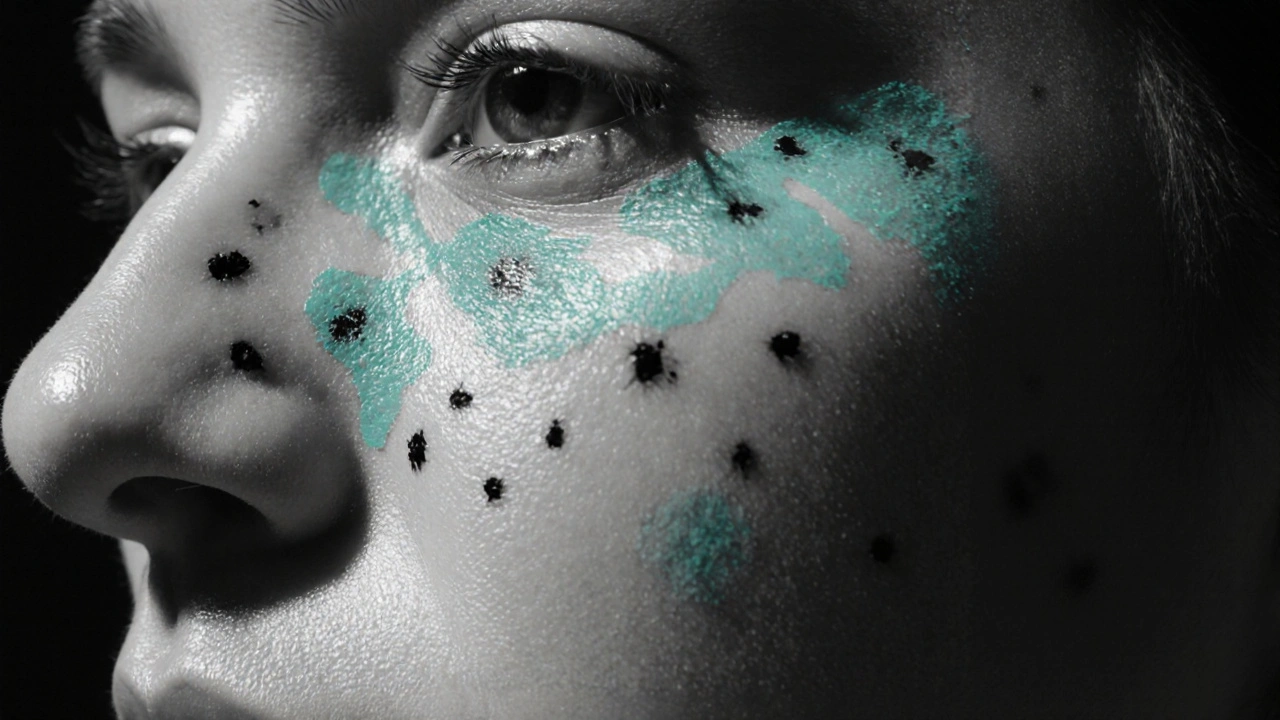Hydroquinone: How It Works, When to Use It, and What to Watch For
When working with hydroquinone, a topical depigmenting agent that slows melanin production. Also known as HQ, it is widely used in dermatology for fading dark spots. Hydroquinone reduces melanin formation by inhibiting the enzyme tyrosinase, which is the key step in the pigment‑making pathway. Because it blocks this step, the skin gradually lightens over weeks of consistent use. This mechanism makes it a go‑to option for conditions where excess pigment is a problem.
Key Conditions and Companion Strategies
One of the most common targets for hydroquinone is melasma, a chronic facial hyperpigmentation disorder often triggered by hormones or sun exposure. Treating melasma effectively usually means pairing hydroquinone with other measures. hyperpigmentation, any darkening of the skin caused by excess melanin, inflammation, or injury can also respond to the same regimen, but success depends on consistent sun protection. That’s where sunscreen, broad‑spectrum SPF 30+ product that blocks UVA and UVB rays becomes essential—without it, new pigment can form faster than hydroquinone can fade it. In practice, dermatologists often recommend a morning routine that starts with sunscreen, followed by a gentle cleanser, then a thin layer of hydroquinone. At night, a retinoid or mild exfoliant can boost results, but users should watch for irritation. The semantic link is clear: hydroquinone tackles pigment, sunscreen prevents new pigment, and melasma or other hyperpigmentation issues improve when all three work together.
Safety is a big part of the conversation. Short‑term use of 2‑4% hydroquinone (the typical over‑the‑counter strength) is considered low risk, but long‑term daily application can lead to ochronosis—an irreversible darkening of the skin. That’s why many guidelines suggest a “pulse” approach: two weeks on, one week off, or alternating with non‑quinone agents like kojic acid or azelaic acid. Monitoring for redness, stinging, or peeling helps catch early irritation before it escalates. If side effects appear, reducing concentration or frequency usually helps. For pregnant or nursing people, most experts advise avoiding hydroquinone altogether, leaning on safer alternatives. Summing up, hydroquinone is powerful when used correctly, especially for melasma and other hyperpigmentation, but it demands a balanced regimen that includes sunscreen and periodic breaks. Below, you’ll find a range of articles that dive deeper into alternative therapies, medication management, and practical tips that complement hydroquinone use, giving you a full picture of how to handle skin pigment concerns safely and effectively.
Hydroquinone vs. Other Skin Lightening Agents: Which Works Best?
- Laura Ledas
- Sep, 23 2025
A detailed comparison of hydroquinone and other skin lightening agents, covering how they work, efficacy, safety, cost, and best use cases for brighter skin.
Learn More